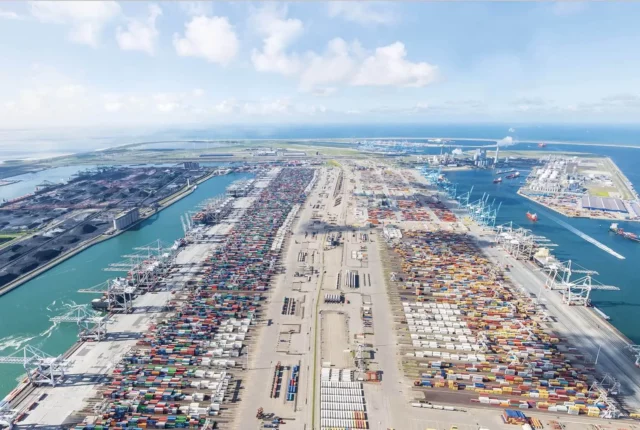
The Power of Predictive Analytics in Supply Chain Optimization
In today’s fast-paced business landscape, the efficient management of supply chains is vital for success. Enterprises are constantly seeking ways to optimize their supply chain operations, and one of the most powerful tools in this endeavor is predictive analytics. In this comprehensive guide, we will delve into the transformative capabilities of predictive analytics in the context of supply chain optimization. From understanding the basics to exploring real-world applications, we’ll equip you with the knowledge needed to harness the full potential of predictive analytics in your supply chain management.
Introduction
Predictive analytics is not merely a buzzword but a game-changer in the world of supply chain management. It involves the use of historical data, statistical algorithms, and machine learning techniques to identify future trends and make informed decisions. By leveraging this technology, organizations can anticipate demand, optimize inventory, streamline logistics, and enhance overall operational efficiency.
The Power Unleashed
Revolutionizing Demand Forecasting
In the dynamic marketplace, accurate demand forecasting is paramount. Predictive analytics empowers businesses to predict customer demand with a high degree of precision. By analyzing historical sales data, market trends, and external factors such as seasonality and economic indicators, companies can adjust their production and inventory levels accordingly. This not only reduces the risk of overstocking or understocking but also improves customer satisfaction by ensuring products are readily available when needed.
Efficient Inventory Management
Excess inventory ties up valuable resources, while insufficient stock leads to missed opportunities. Predictive analytics optimizes inventory management by providing insights into stock turnover rates, reorder points, and lead times. It enables organizations to maintain the right level of inventory, reduce carrying costs, and ensure products are always in stock.
Streamlined Logistics
Logistics play a pivotal role in supply chain management. Predictive analytics optimizes route planning, carrier selection, and delivery scheduling. By considering factors like traffic patterns, weather conditions, and historical transit times, organizations can minimize transportation costs and improve delivery accuracy.
Enhanced Supplier Relationships
Predictive analytics is not limited to internal operations; it extends to supplier relationships. By analyzing supplier performance data, businesses can identify potential issues before they disrupt the supply chain. This proactive approach fosters stronger, more collaborative partnerships with suppliers.
Real-world Applications
Case Study: Amazon’s Fulfillment Centers
Amazon, a global e-commerce giant, utilizes predictive analytics extensively in its supply chain operations. The company uses machine learning algorithms to predict which products customers are likely to purchase. These predictions inform inventory placement within their vast network of fulfillment centers, ensuring rapid delivery times.
Case Study: Coca-Cola’s Production Optimization
Coca-Cola leverages predictive analytics to optimize production schedules. By analyzing historical data, weather patterns, and regional consumption trends, the company adjusts its production volumes in real-time. This minimizes excess inventory and ensures that products are delivered to retailers when demand is high.
FAQs
How does predictive analytics differ from traditional forecasting methods?
Predictive analytics utilizes advanced algorithms and machine learning techniques to analyze vast datasets and identify complex patterns. Traditional forecasting methods often rely on simpler statistical models and historical averages. Predictive analytics provides more accurate and granular predictions.
Is predictive analytics suitable for small businesses?
Yes, predictive analytics can benefit businesses of all sizes. Many software solutions cater to small and medium-sized enterprises, making it accessible and cost-effective.
What data is required for effective predictive analytics in supply chain management?
To perform effective predictive analytics, businesses need historical sales data, inventory records, and information on external factors that impact demand or supply, such as market trends, seasonality, and economic indicators.
Are there any privacy concerns associated with predictive analytics?
Yes, privacy is a concern, especially when dealing with customer data. Businesses must adhere to data protection regulations and implement robust security measures when using predictive analytics.
How long does it take to implement predictive analytics in a supply chain?
The implementation timeline varies depending on the complexity of the supply chain and the availability of data. In some cases, organizations can start seeing benefits within a few months, while others may take longer to fully integrate predictive analytics into their operations.
Conclusion
The power of predictive analytics in supply chain optimization cannot be overstated. It is a transformative tool that empowers organizations to make data-driven decisions, reduce costs, improve efficiency, and stay ahead of the competition. By embracing predictive analytics, businesses can navigate the complexities of modern supply chain management with confidence.
As you embark on your journey to harness the potential of predictive analytics, remember that success lies in the integration of technology with human expertise. It’s not about replacing people with machines; it’s about equipping people with powerful tools to make better decisions and drive growth.
So, are you ready to supercharge your supply chain with the predictive power of analytics?






